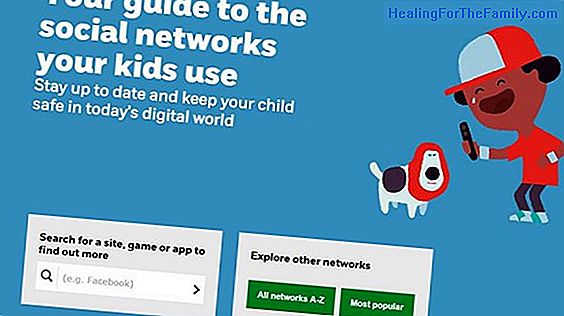How enterovirus affects the nervous system of children
Enteroviruses have always been, are and will be close to us, our children and the entire world population. They are not exotic or from distant countries such as Ebola, Zika, Chikungunya ... Enteroviruses are usually not very problematic, but sometimes, symptoms can be complicated. Diseases that ente
Enteroviruses have always been, are and will be close to us, our children and the entire world population. They are not exotic or from distant countries such as Ebola, Zika, Chikungunya ...
Enteroviruses are usually not very problematic, but sometimes, symptoms can be complicated.
Diseases that enterovirus transmits to children

Enteroviruses, in most of the cases, even if they visit us, will do so without too many problems. In fact, it is the cause of all these diseases:
- The virus 'foot-hand-mouth'.
- Herpangina (a type of viral angina).
- Some gastroenteritis (vomiting and diarrhea).
- Some colds or some bronchitis.
Well, many of these diseases are caused by the famous and current enteroviruses. If you have an acquaintance or relative over 52-55 years old with one leg much thinner and weaker than the other, as a child, which has led him to limp throughout his life, it was because of the fearsome polio, also produced by an enterovirus that got cornered thanks to vaccines (pediatricians always recommend vaccination).
How enterovirus affects children
The word enterovirus makes clear the preferred location of these microorganisms: in the whole Greek it is called "εντερο" and means intestine, inside or in.
We all know what symptoms go with gastroenteritis. Enteroviruses are viruses that can be found in the intestine and are usually eliminated in the stool. But they can also be transmitted by coughing or speaking or by saliva; that is why we call diseases that are easy to transmit in these two ways, diseases of fecal-oral transmission. Therefore, the best way to keep them at bay la is to wash our hands with soap and water
when changing diapers, before eating, etc. and avoid talking or coughing near the face of another person or another child without a handkerchief that hinders the spread of the virus, if we are / are sick (although in 50-80% of the cases, the viruses are also transmitted from carriers without symptoms). It should be emphasized en that in most cases, the symptoms produced by these enteroviruses are: mucus, cough, fever, rashes or diarrhea, grouping in a combinatorial way, two by two, three by three, four in four or all together; On many other occasions we will only find one of these symptoms. As you see, the possibilities are numerous.
When the enterovirus attacks the child's nervous system What is not so frequent is that these viruses attack the child's nervous system
. And in that yes that it is necessary to be very attentive. In these cases, the enterovirus can cause meningitis, encephalitis, paralysis or other serious symptoms, but this is not new. Already in 2001, a Hospital in Oviedo (Spain), the histories of 94 cases of viral meningitis that took place between May 1996 and September 1997 were reviewed; in 63% of cases, the cause was infection by an enterovirus (in the medical literature it is known that enteroviruses are responsible for 85-95% of viral meningitis in children). In this studied outbreak all evolved well and without sequelae.
There are frequent outbreaks at the end of spring, early summer and autumn, although they can 'attack' at any time of the yearas it happens in tropical countries. The age range in which there are usually more cases is
below 6 years and in the group that affects us is over 2 years of life. Bibliography consulted: Treaty of Pediatrics M Cruz, 2006 Enterovirus Infections of the Central Nervous System in Children (H. Rudolph H. Schroten February 2016)
Enterovirus meningitis. Epidemiological, clinical and laboratory characteristics in a series of 60 children. (C. Pérez Méndeza)
Departament de Salut Generalitat de Catalunya












